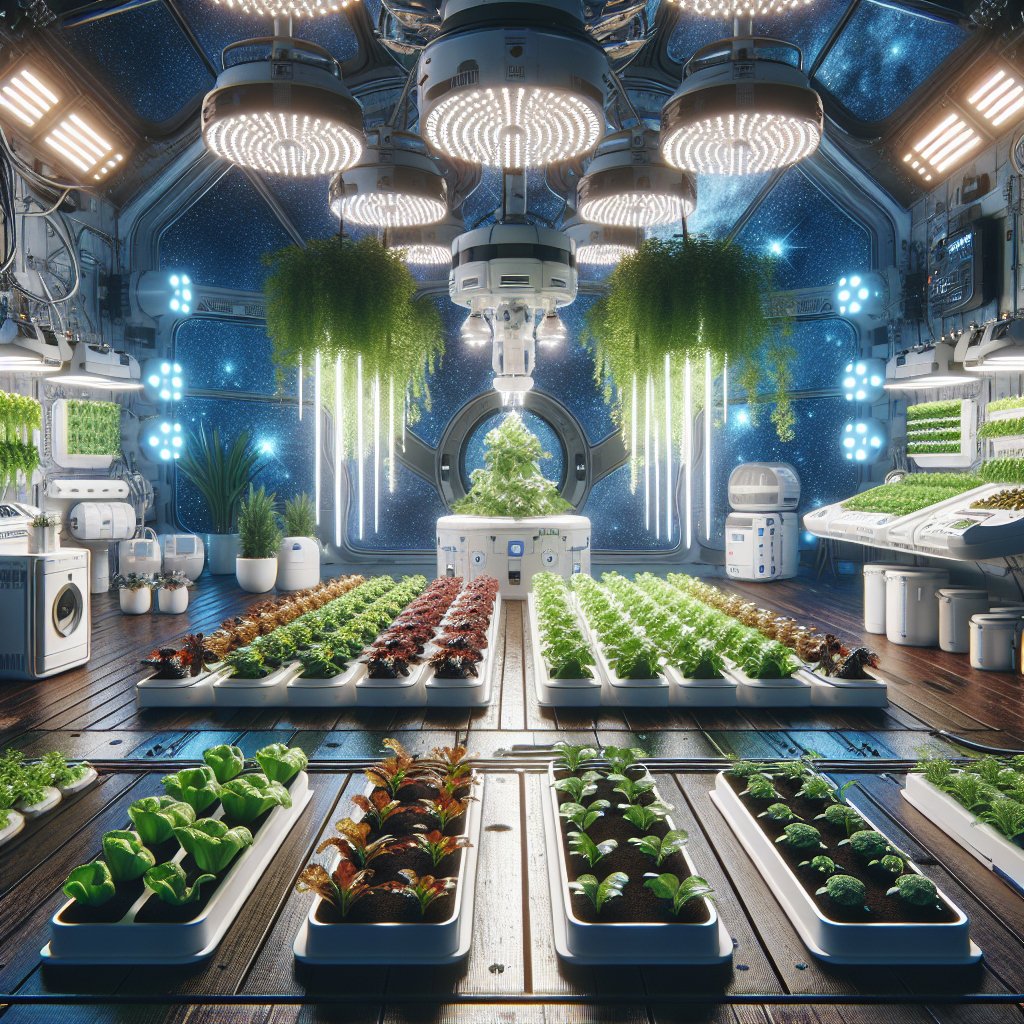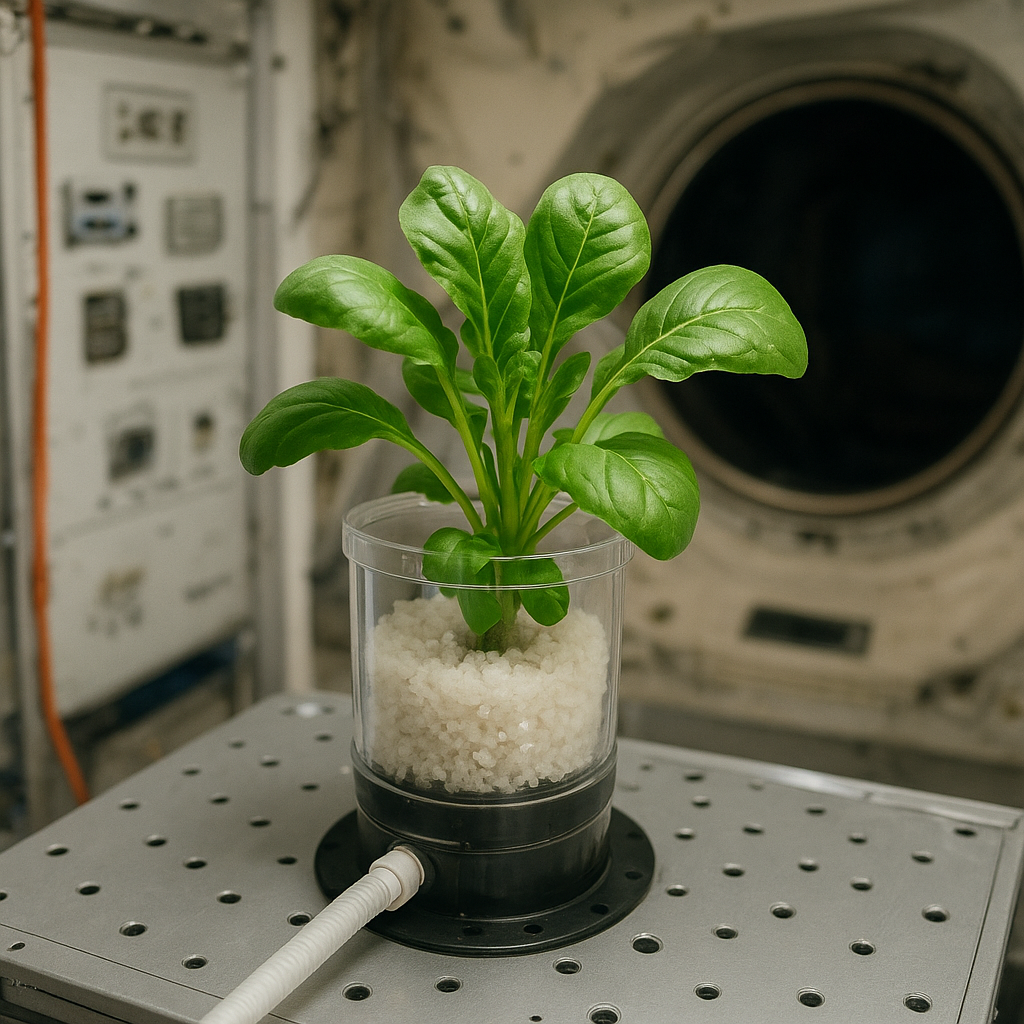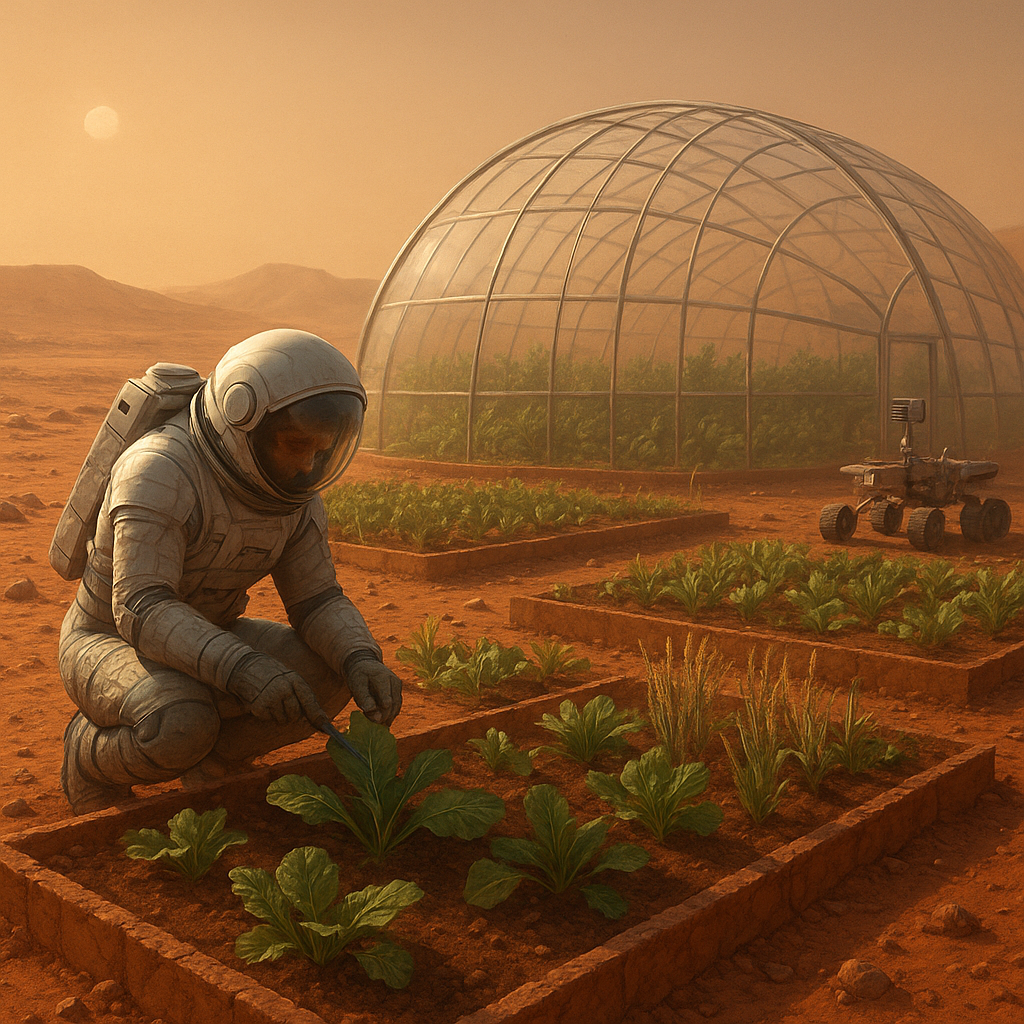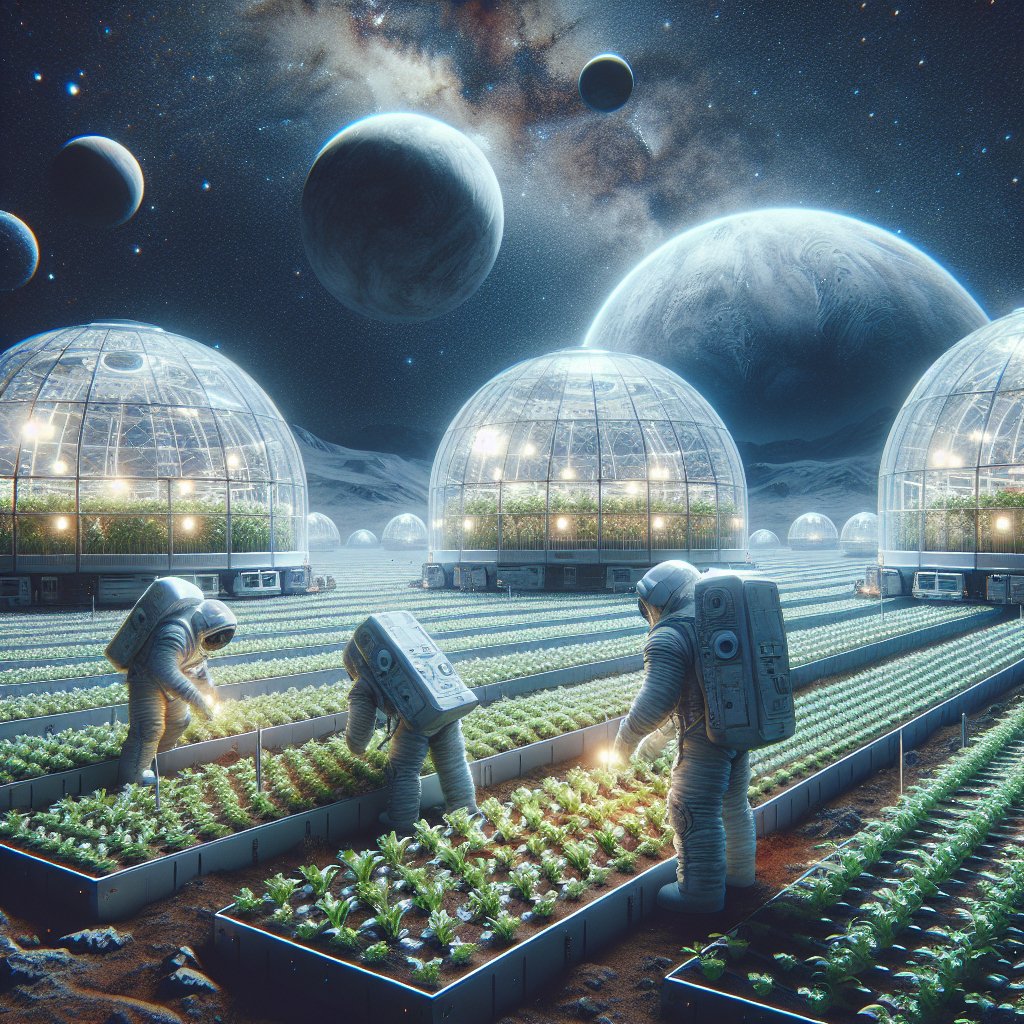How space farming could revolutionize food production on Earth is a question that has gained significant attention in recent years. As the global population continues to rise and the challenges of climate change become more pronounced, innovative solutions are needed to ensure food security. Space farming, the practice of growing crops in extraterrestrial environments, not only holds promise for sustaining life on other planets but also offers groundbreaking techniques that could transform agriculture on our home planet. This article explores the potential of space farming, its technological advancements, and the implications for food production on Earth.
The Concept of Space Farming
Space farming refers to the cultivation of plants in controlled environments beyond Earth, such as on the Moon or Mars. The concept emerged from the necessity of supporting long-term human missions in space, where resupplying food from Earth would be impractical. The idea is to create self-sustaining ecosystems that can produce food, recycle waste, and support human life in harsh extraterrestrial conditions.
One of the primary motivations behind space farming is the need for sustainable food sources as humanity ventures further into the cosmos. NASA and other space agencies have been researching various methods to grow food in space, including hydroponics, aeroponics, and bioregenerative life support systems. These methods not only aim to provide fresh produce for astronauts but also serve as a testing ground for agricultural innovations that could be applied on Earth.
Hydroponics and Aeroponics
Hydroponics is a method of growing plants without soil, using nutrient-rich water instead. This technique allows for precise control over the nutrients that plants receive, leading to faster growth and higher yields. In space, where resources are limited, hydroponics can be particularly advantageous. NASA has successfully grown various crops, including lettuce and radishes, using hydroponic systems aboard the International Space Station (ISS).
Aeroponics takes this concept a step further by suspending plants in air and misting their roots with a nutrient solution. This method uses even less water than hydroponics and can lead to even faster growth rates. Experiments conducted on the ISS have demonstrated the viability of aeroponics for growing food in space, showcasing its potential for future missions to Mars and beyond.
Bioregenerative Life Support Systems
Bioregenerative life support systems (BLSS) are designed to create a closed-loop ecosystem that can sustain human life by recycling waste and producing food. These systems integrate plants, microorganisms, and animals to create a self-sustaining environment. Research into BLSS has shown that it is possible to grow food while simultaneously purifying air and water, making it an ideal solution for long-duration space missions.
The development of BLSS not only has implications for space exploration but also offers insights into sustainable agricultural practices on Earth. By mimicking natural ecosystems, farmers can reduce reliance on chemical fertilizers and pesticides, leading to healthier crops and a more sustainable food system.
Implications for Earth Agriculture
The advancements in space farming technologies have the potential to revolutionize food production on Earth. As the global population is projected to reach nearly 10 billion by 2050, traditional agricultural methods may struggle to meet the increasing demand for food. Space farming techniques can provide innovative solutions to some of the most pressing challenges facing agriculture today.
Resource Efficiency
One of the most significant advantages of space farming techniques is their resource efficiency. Hydroponics and aeroponics use significantly less water than traditional farming methods, which is crucial in regions facing water scarcity. By adopting these methods, farmers can produce more food with fewer resources, reducing the environmental impact of agriculture.
Additionally, space farming technologies can be implemented in urban areas, allowing for vertical farming and the cultivation of crops in controlled environments. This approach can help reduce transportation costs and carbon emissions associated with food distribution, as produce can be grown closer to where it is consumed.
Climate Resilience
As climate change continues to affect agricultural productivity, space farming techniques offer a way to build resilience into food systems. Controlled environment agriculture (CEA) allows for year-round crop production, independent of weather conditions. This capability can help mitigate the risks associated with climate variability, ensuring a stable food supply even in the face of extreme weather events.
Furthermore, the research conducted in space can lead to the development of crop varieties that are more resilient to pests, diseases, and environmental stressors. By understanding how plants respond to the unique conditions of space, scientists can apply this knowledge to enhance crop resilience on Earth.
Food Security and Nutrition
Space farming has the potential to improve food security and nutrition, particularly in regions that struggle with access to fresh produce. By utilizing hydroponics and aeroponics, communities can grow nutrient-dense crops in urban settings, providing access to fresh fruits and vegetables year-round. This approach can help combat food deserts and improve public health outcomes.
Moreover, the ability to grow food in controlled environments can lead to the production of crops that are tailored to meet specific nutritional needs. For example, biofortification techniques can be employed to enhance the nutritional content of crops, addressing deficiencies in essential vitamins and minerals.
Challenges and Future Directions
While the potential of space farming is immense, several challenges must be addressed before these technologies can be widely adopted on Earth. One of the primary obstacles is the high initial cost of setting up hydroponic and aeroponic systems. However, as technology advances and economies of scale are achieved, these costs are expected to decrease, making these methods more accessible to farmers.
Another challenge is the need for education and training for farmers to effectively implement these new techniques. As traditional farming practices have been passed down through generations, there may be resistance to adopting new methods. Education and outreach programs will be essential to demonstrate the benefits of space farming technologies and encourage their adoption.
Research and Development
Continued research and development in space farming will be crucial for unlocking its full potential. Collaborations between space agencies, agricultural researchers, and private companies can drive innovation and lead to the development of new technologies that can be applied both in space and on Earth.
Furthermore, as space exploration continues to advance, the lessons learned from space farming can inform sustainable agricultural practices on Earth. By embracing the principles of resource efficiency, climate resilience, and food security, we can create a more sustainable food system that benefits both people and the planet.
Conclusion
How space farming could revolutionize food production on Earth is a testament to the innovative spirit of humanity. As we look to the stars and explore the possibilities of life beyond our planet, we must also consider the implications of these advancements for our own agricultural practices. By harnessing the technologies developed for space farming, we can create a more sustainable, resilient, and secure food system that meets the needs of a growing global population. The future of agriculture may very well lie among the stars, but its benefits will be felt right here on Earth.




